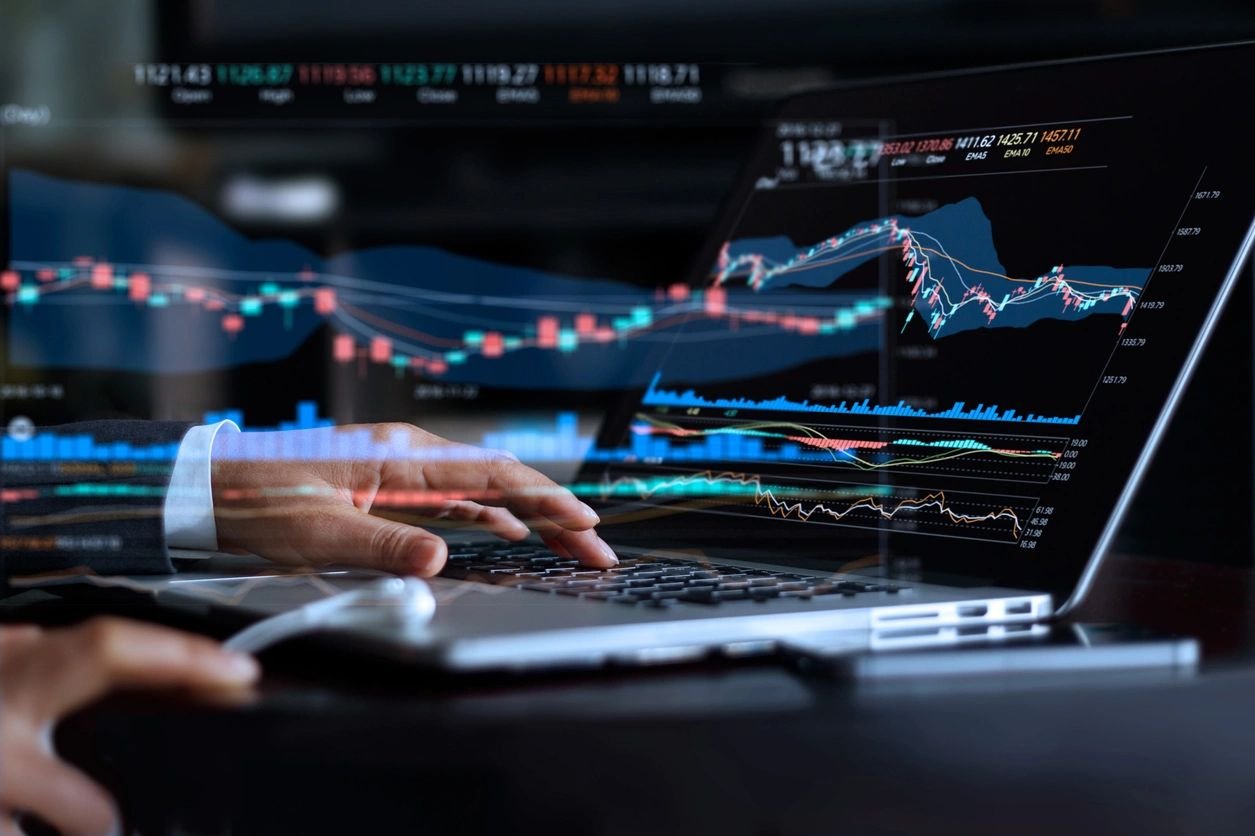Looking for Insights, Strategies and the Right Tech to Take On Your Journey to Net Zero?
Interview with Paul Frith, President, conducted by Marie Cresswell, Thomas Cole Inc.
In an interview with Paul Frith, President of Paul Frith Consulting, Paul provides a comprehensive overview of his company, which operates across three tiers: business development, strategy, and other services. He emphasizes his focus on energy efficiency, greenhouse gas (GHG) reduction, and new technology, and highlights his work with major developers and public sector organizations. He also provided updates on his sustainable initiatives and partnerships, and discussed his career journey and plans for future business development initiatives.
Frith provided insight into the journey towards net zero, emphasizing the initial focus on energy efficiency and subsequent steps involving operational carbon reduction and addressing embodied carbon. He talks about the importance of starting somewhere if you want to make changes, and advised businesses and organizations to seek support from consultants and utilize government programs and incentives. Frith also encouraged individuals to reach out for guidance in the pursuit of net zero.
So, tell me about your company. Please elaborate on the work you do and include examples of some of your clients.
My company is structured into three tiers. Seventy per cent of my business is business development: clients retain me to put them in front of some of the bigger players in the development space and the public sector. The clients that retain me generally have products that fit into 3 buckets: energy efficiency, greenhouse gas (GHG) reduction, or new technology.
I am working my way to being known as “the guy that has all the new toys,” as I work with a lot of new technologies. Developers work with me because I am able to bring them technologies they don’t yet know a lot about. For example, I work with the top embodied carbon software company in North America; the largest green roof company in Ontario; and the top solar and battery storage company in Canada. I want to work with leaders in new products and new technologies. That’s Tier One, which is business development.
Tier Two is on the business strategy side. I work with both public and private sector organizations to help them with their efforts around decarbonization or, potentially, supply-chain management. For example, I am working with a large university and some municipalities towards their net zero goals.
Tier Three involves working with not-for-profits and helping them with business strategy. I work with a really good mix of clients.
I also work with a number of major developers in the country, including Tridel and Minto in multi-residential, Triovest on the commercial side, and Empire Communities on the low-rise side. On the public sector side, I spend time with a number of municipalities, and also work in education and with some healthcare facilities. I am doing some work with the Town of Caledon on the rollout of their Green Development Standard, and do quite a bit of work with York University and Mohawk College.
Tell me about your success and how you measure success.
I measure success in different ways for different clients. Sometimes it is strictly based on volume of product sold or value of the opportunity. I also measure success based on behavioural change, which is very important to me. When I can work with a client or vendor whose product is going to make a significant or dramatic change, that matters a lot. One great example of this is Tangible Materials, a client that has the top embodied carbon product in North America. We have been able to measure success in a few ways. First, developers are finally at the stage of addressing embodied carbon, when 5 years ago most wouldn’t have known what it was. This is being driven by different municipal and federal policies and standards like the Toronto Green Standard. There is an expectation that the next version of the Standard will include embodied carbon tracking for the public sector, and the smart developers are trying to get out in front of this. We are seeing a significant uptake of Tangible’s product because of this.
Another good example is Geothermal heating and cooling, which we will talk more about later. From a behavioural change perspective, we are seeing significant market growth in the technology. One of my clients is one of the top Geothermal utilities in the country, and we are now at a point of a choice between geo and natural gas for new condos, when 12 or 13 years ago, it wasn’t even part of the discussion. There has also been a lot of talk about hydrogen, so fuel-switching is becoming more and more important as every day goes by.
With fuel prices slated to rise quite substantially in 2025, do you think more private and public organizations will turn to Geothermal?
The growth in the multi-residential space has been significant. There are a number of utilities in the market that offer capital solutions for the development community, so that space is in great shape. When it comes to low rise, the Delta is still significant compared to natural gas, but as an industry we are doing everything we can to educate and help the home-builder community work with the technology. Being on the Board of Directors of the Ontario Geothermal Association, we are always working with government to come up with tools to help offset the cost and increase uptake of the technology. There is nothing specific to speak about right now, but I am hoping we will have some exciting things to talk about soon. I always suggest that anyone who wants to learn more about geo should join the Ontario Geothermal Association and also attend our annual conference that is coming up in the spring.
It sounds like you’re an influencer on the governance side of it as well?
Yes, I am a registered lobbyist, from a very heavily political family. I was very active on multiple government fronts and spent time with the provincial government and some public utilities. Thanks to my political background, I better understand the game and I know how to talk to these guys. I was very involved in the development of the programs that were brought to market through the Green-On program with the previous provincial administration. I spent a lot of time with the Ministry of Environment and Climate Change, Ministry of Energy and I was one of the industry people pushing the low carbon agenda. I still spend quite a bit of time with government on multiple fronts.
Excellent. You certainly wear a number of hats, don’t you?
I always joke with people about that one until you really get to know me. You think I’m just a Geothermal guy or a BD guy, and then you peel back the onion – and find a guy who has a lot of layers. That’s how I like to explain it. I love surprises. I genuinely love what I do. That’s what drives me.
Can you think of any projects in the public sector that ring a bell in terms of a university or a college getting on that path? And making a difference through carbon reduction?
Absolutely. I can give you a few examples using Geothermal, as I worked directly in that space for a few years. Some of the larger projects in Canada are Vancouver International Airport, which has one of the largest Geothermal fields in the country, and the University of Toronto, which has a massive geo system at their downtown Toronto campus. One project that I was involved with was Cornerbrook Critical Care Centre, which has another one of the larger geo fields and was drilled into granite, so it had some unique challenges but was an amazing project.
With the educational sector, the discussion around decarbonization of campuses has increased dramatically. There are solutions at both the building and campus levels where they can eliminate natural gas and fossil fuels. One of the challenges is on the financial/capital side of things, as they like to own their own assets. COVID created problems for them, as it dramatically impacted their financial resources, making it tough for them. I expect to see significant discussions around the different Geothermal utilities coming over the next 12 to 18 months, as they need solutions.
And do you think with that, governance will change in North America?
I can see it coming soon. The reporting aspect is already happening here with organizations identifying actions and targets to reach net zero by 2050. We’re already seeing certain benchmarking standards put out there by the likes of the Canada Green Building Council and the BOMA. But there is still no mandate on delivering on these targets. With the City of Toronto’s Toronto Green Standards, you must illustrate your plans in order to get the funding and reap the program benefits. Right now, I’m working with another municipality to launch significant green standards.
What other types of work do you do with respect to sustainability and buildings?
As mentioned earlier, I seek out new technology, including Tangible Materials that I mentioned earlier. As their partner, I have been able to generate a lot of interest in their technology with both the public and private sector. Another client I work with is Gingko Sustainability, the largest green roof company in Ontario and one of the largest living wall companies in Canada. They are less well-known, as clients typically deal directly with the roofing contractor. Working with me, they have become more engaged with the development community. We’re now taking a more direct approach, so building owners can engage in the process of designing a building that has a green roof.
I also work with Mission 2050, one of the largest solar and battery storage companies in Canada, with over 4,000 sites in Ontario. The launch of virtual net metering in Ontario has helped the solar market dramatically, and we expect big things in 20204.
I also work with a company based in the US targeting universities, colleges and campus-type facilities and helping turn them into zero-waste facilities using a shared savings model. They have done work with some significant facilities like Duke University and the University of Pittsburgh. Their model is not commonplace in the Canadian market, but I am working with a number of organizations to help them better understand the model and how it can help. The savings could be astronomical, potentially in the millions of dollars.
When did you start your consultancy business focused on Sustainability, Energy and Carbon?
I decided to take the plunge and become an entrepreneur in November of 2021. I knew I had a very good client base and good knowledge of sustainability. There is always a risk when you start a new company, but within 3 months I had a number of clients on retainer and knew what I would be doing for the rest of my life. It took me some time to truly define what my company was all about. Now, over 2 years later, I am having the time of my life and doing everything I can to make a difference.
And it sounds like you have a passion for making a difference in this world.
I’m proud of the work I did in Geothermal, and with the projects I was involved in, take about 150,000 tons of GHGs out of the atmosphere annually, which really matters to me. I am still very active in the space, as one of my clients, Diverso Energy, is one of the larger utilities in the Geothermal space. As mentioned, I am also on the Board of Directors of the OGA and am Chairing their annual conference this year. I did get a reputation for the work I did in the Geothermal space, and a number of people reach out to me because of this. They genuinely want to talk to someone like me who knows and understands the geo market. Someone who knows the ins and outs of the industry and who the key players are, which can be helpful.
You’re a great connector.
This is what I pride myself on. I am very fortunate that I was able to build a fairly substantial network that, in turn, allowed me to build my company. Building a network isn’t easy; it takes a lot of work and hours. There is one story that I like to tell about my journey – I recently shared it with Mark Mencarelli, my new account manager. About 13 years ago, when I came into the industry, I only knew one person, Kris Stevens, who was the Executive Director of the Ontario Sustainable Energy Association at the time. My first week in the space I got together with Kris and asked him. Kris, who do I need to know? And he said, what do you mean? I said, I want to build a network. And I want to have the biggest network of anybody. Where do I start? Who do I need to know? He gave me one name. He said, you need to know Hazel Farley. Hazel was, at the time, the Executive Director of the Canada Green Building Council, Greater Toronto Chapter. I told her I wanted to get involved, and asked who I needed to know, and this is how it started. She connected me with people and more people got added. I actually ended up chairing the GAGBC’s golf tournament for five years through getting to know Hazel. It was through this process that I met my dear friend, Jim Lord of Ecovert.Jim is also the Chair of Toronto Green Drinks; I co-chair that with him. Everything just grew from there. The combination of being in front of developers in the industry all the time made me become known as a Geothermal guy and the guy who knows how to have a good time and treats people really well.
Where does a business or organization start if they want to be transformative?
That’s a very interesting question, because people will give you different responses. My perspective is, you’ve got to start somewhere. The basic starting point if you haven’t done anything is energy efficiency. If you are past that point, operational carbon would be the next thing to hit. Focusing on your HVAC system and making changes to reduce your carbon can be cost-effective. You don’t have to change your entire system, but upgrading to heat pumps or more efficient boilers makes a difference, and on new builds looking at technology like Geothermal is a great start. The next step would be focusing on embodied carbon and trying to get to true net zero.
Any advice for people starting their journey to net zero?
If you don’t really understand the total picture, you need to talk to a consultant. It’s the best place to start. Also, if you have time, look at a few public sector (government) websites, such as the IESO, and organizations like Natural Resources Canada. There are incentives through the Greener Homes program right now for homeowners to switch to heat pumps; the rebates are upwards of $5,000 to $7,000. The simplest way to start is to talk to somebody in this space. Anyone working in the sustainability world is part of a big happy family, and we all want to help. If you’re not sure, call me and I can help point you in the right direction.
For more information contact Paul Frith, CEO, Paul Frith Consulting at pf@paulfrithconsulting.com











